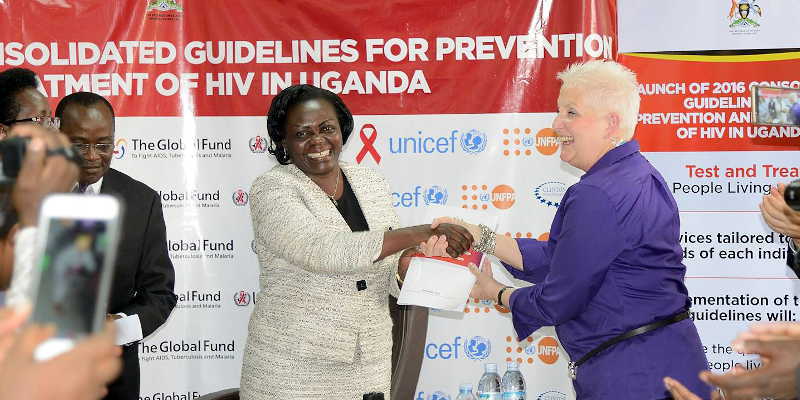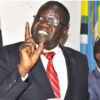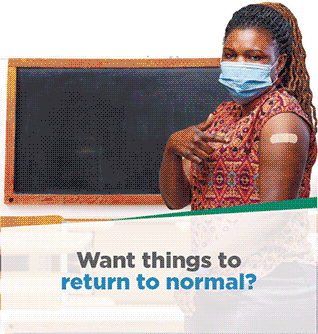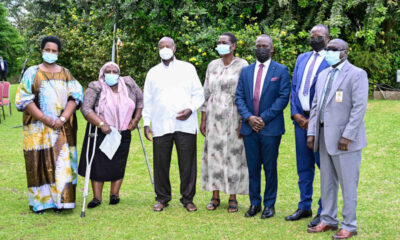Analysis
Uganda rolls out free HIV/AIDS testing and treatment for all

Health State Minister Sarah Ochieng (left) shakes hands with Ambassador Malac at the launch of the new Test and Treat guidelines at the Ministry Headquarters in Kampala
With Support from the American government, Uganda has announced that all HIV Positive persons will start receiving free antiretroviral treatment.
The announcement made on Tuesday November 29, as part of the preparation events to commemorate December 1st World Aids Day, has been lauded as a landmark step in the fight against the disease as well as help Uganda to meet its goal of reducing the number of people with the disease to 628,000 by 2030.
According to Uganda’s Ministry of Health, there are about 1.5million persons currently living with the disease in Uganda.
The announcement is a fulfilment of new World Health Organization (WHO) guidelines that require that all persons that test positive to HIV be put on ARV treatment no matter the stage of the disease or the level of their CD4 count.
The US Ambassador to Uganda Deborah Malac who witnessed the launch of the new initiative underscored the policy’s importance in achieving epidemic control.
Malac said: “Having an AIDS-free generation is now within sight and no longer just a distant promise. Together, the U.S. and Uganda have made significant progress in reducing the threat of HIV/AIDS. This new policy is a final push to ensure all Ugandans have access to lifesaving HIV care and treatment.”
Previous WHO guidelines prescribed the initiation of ART treatment for HIV positive persons with CD4 count of 500cells/mm3 or less for pregnant mothers and children.
Malac also noted that the aggressive new approach to have more HIV-positive Ugandans on treatment immediately upon diagnosis, will help reach other segments of society that previously didn’t benefit from existing HIV treatment programs, and ultimately, to help end the AIDS epidemic in Uganda.
Research shows that immediate treatment decreases deaths and illnesses related to HIV, producing a higher quality of life and fewer long-term health costs.
Early treatment has been proven to lower the risk of HIV transmission, helping to limit new infections. In Uganda, the Ministry of Health projects that the new Test and Treat push will prevent 716,000 new HIV infections, avert 98,000 AIDS-related deaths, and decrease the total number of people living with HIV by 628,000 by 2030.
The new treatment push is also expected to ensure that Uganda remains on track to achieve UNAIDS’s ambitious 90-90-90 goals. The 90-90-90 treatment target states that by 2020, 90 percent of all people living with HIV will know their status, 90 percent of all people diagnosed with HIV will be on antiretroviral therapy, and 90 percent of people receiving antiretroviral therapy will have viral suppression.
Ambassador Malac says her government will invest $221million dollars to implement Test and Treat programs. This will be part of its annual $383 million dollar investment in Uganda this fiscal year. The US Embassy in Kampala says that Since 2004, the American government has invested $3billion dollars in supporting Uganda’s efforts to combat the HIV/AIDS epidemic.
The American government funds nearly 80 percent of Uganda’s HIV/AIDS budget. Uganda’s heavy reliance on Americans to support such a critical challenge has been criticized as a major risk factor for the country. With the election of Republican Donald Trump for U.S Presidency, these fears have been pushed a notch higher because of his avowed stance to reduce America’s engagement in other countries with the preference to concentrate on local problems in the U.S
Comments



























